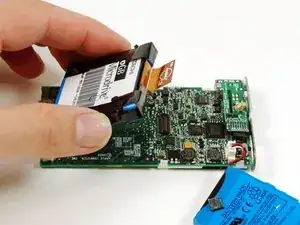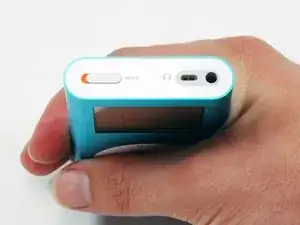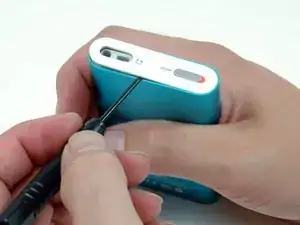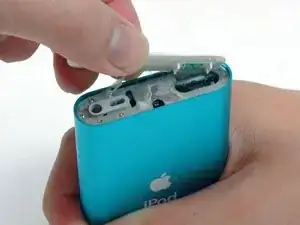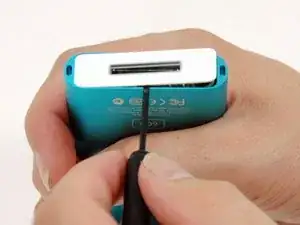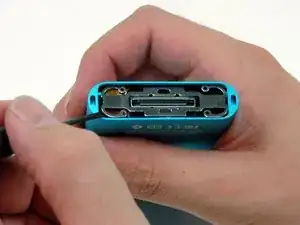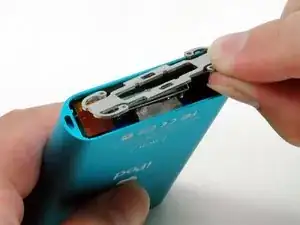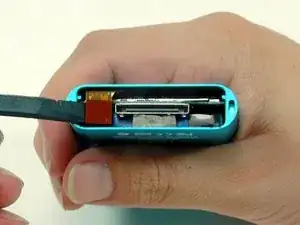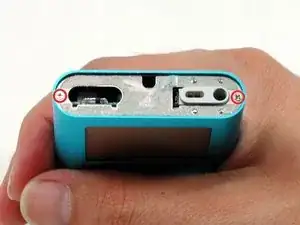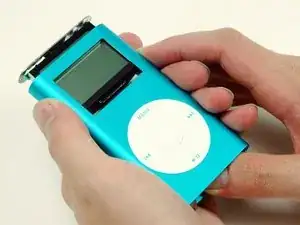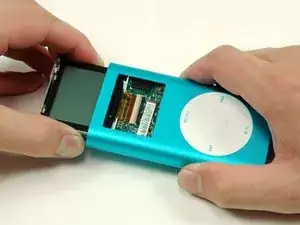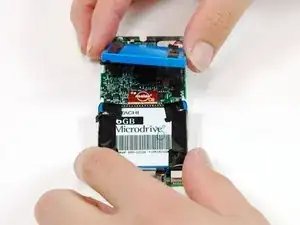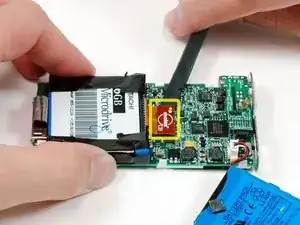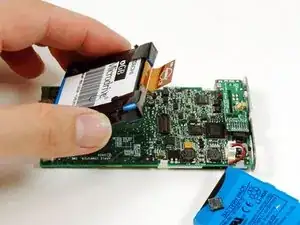Einleitung
Rüste deinen iPod mit einer neuen Festplatte auf.
Werkzeuge
Ersatzteile
-
-
Setze vorsichtig einen kleinen Schlitzschraubendreher oder einen Jimmy zwischen das Metallgehäuse und die obere weiße Plastikabdeckung. Heble die obere weiße Plastikabdeckung mit den Schraubendreher ab. Passe darauf auf, dass du das weiche Plastik nicht mit dem Schraubendreher beschädigst.
-
Um das Lösen einfacher zu machen, kannst du mit einem Fön die Blender ein paar Sekunden lang leicht erwärmen.
-
-
-
Eine kleine Sprengringzange ist das beste Werkzeug, um die Metallhalterung zu entfernen.
-
Du kannst auch einen Schlitzschraubendreher benutzen, um die Metallhalterung wie gezeigt unter der unteren Blende zu lösen. Dücke dafür zuerst die Metallarme an den Ecken ein. Hebe dann die Halterung an.
-
-
-
Löse das orangene Flachbandkabel zum ClickWheel vorsichtig mit dem Spudger oder der Fingerspitze vom Logic Board.
-
-
-
Entferne die beiden Kreuzschlitzschrauben #00, mit denen die Kopfhörerbuchse am Gehäuse befestigt ist.
-
-
-
Drücke nahe am unteren Rand des ClickWheels vorsichtig auf das Logic Board und schiebe den iPod aus seinem Gehäuse heraus.
-
-
-
Wenn das Logic Board weit genug herausgeschoben ist, fasse es an beiden Seiten des Displays behutsam an und hole den iPod weiter aus seinem Gehäuse heraus.
-
-
-
Löse das orangene Flachbandkabel zur Festplatte vorsichtig mit dem Spudger oder der Fingerspitze vom Logic Board ab.
-
Um dein Gerät wieder zusammenbauen, folge den Schritten in umgekehrter Reihenfolge.
24 Kommentare
I have been tinkering with the iPod classics, the 5th gens and now the iPod minis. I think the minis have a cool form factor and the plug and play for a compact flash card is handy. I have purchased a compact flash adapter to SD card, I then put a 128GB microsd into an SD to micro adapter and now I have 128GB mini. As a note, I did have to format the new card to FAT32 with AOMEI prior iPod restore.
djcfuzz -
Hello good sir i unfortunately speakn't good english but i try best now .. having a good day are you… i am also have a service and for fixing ipods … if you want i will give it too you send me an email albertogeniusipodfixes@gmail.com
can i change the type of hard disk
Hello good sir i unfortunately speakn't good english but i try best now .. having a good day are you… i am also have a service and for fixing ipods … if you want i will give it too you send me an email albertogeniusipodfixes@gmail.com
Yes www.iflash.xyz has good stuff for these or u can just use a CF Card and it'll be Plug N Play…literally
So….thx, now it´s absolute broken!!!
Ha, you stupid idiot.
